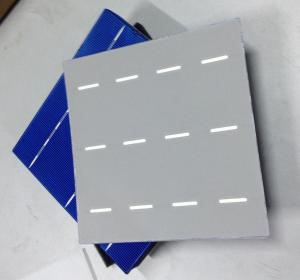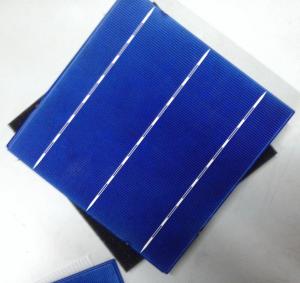World-Beating Solar Cells-25 Years Life Time-17.4% Effiency
- Loading Port:
- Shanghai
- Payment Terms:
- TT OR LC
- Min Order Qty:
- 1000 pc
- Supply Capability:
- 5000000 pc/month
OKorder Service Pledge
OKorder Financial Service
You Might Also Like
Brief Introduction of Solar Cells
A solar cell, is an electrical device that converts the energy of light directly into electricity by the photovoltaic effect, which is a physical and chemical phenomenon. It is a form of photoelectric cell, defined as a device whose electrical characteristics, such as current, voltage, or resistance, vary when exposed to light. Solar cells are the building blocks of photovoltaic modules, otherwise known as solar panels.
Introduction of our Company
We are a NASDAQ-listed leading manufacturer of solar cells and modules and closely affiliated with the renowned China Electric Equipment Group, which has long established strategic partnerships with the KME group and DuPont. Our group is one of the top two manufacturers of electrical transformers in China and also manufactures advanced composite materials used in the construction of aircraft and other transportations systems. We have extensive experience in the photovoltaic industry and is known for outstanding innovation, efficiency and quality. Initially, we were focused solely on cell manufacturing and supplied leading European solar module manufacturers with cells. Today, we has added a solar module production capacity of 1.2 GW and has sold over 1.4 GW of modules.
We work tirelessly to improve the efficiency of our photovoltaic cells and modules as well as our system costs to provide our customers with world-class solar solutions and to ensure competitiveness of PV with conventional sources of electricity. With a 10-year product and a 25-year linear performance guarantee, backed by leading insurance companies, we are one of the industry leaders.
Specifications of Polycrystalline Solar Cells
Format : 156 mm × 156 mm ± 0.5 mm
Thickness: 210 μm ±40 μm
Front (-) : 1.5mm bus bars (silver),blue anti-reflection coating (silicon nitride)
Back (+) : 2.5mm wide soldering pads (silver) back surface field (aluminium)
Efficiency (%) | Pmpp (W) | Umpp (V) | Impp (A) | Voc (V) | Isc (A) |
18.00% | 4.38 | 0.528 | 8.291 | 0.631 | 8.869 |
17.80% | 4.33 | 0.525 | 8.252 | 0.629 | 8.821 |
17.60% | 4.29 | 0.532 | 8.053 | 0.633 | 8.541 |
17.40% | 4.23 | 0.528 | 8.092 | 0.624 | 8.632 |
17.20% | 4.19 | 0.524 | 7.992 | 0.62 | 8.458 |
17.00% | 4.14 | 0.52 | 7.972 | 0.623 | 8.5 |
Advantage of Polycrystalline Solar Cells
1. Tire-1 Solar Cells’ Manufacturer Quality Guarantee. With a complete and sophisticated quality government system, our Quality Management have arrived world’s leading place. Customer can receive Tire-1 Cells Maker’s Quality Standard Products.
2. Trusted Warranty. We can supply trusted after-sales service to our customer. If our cells are found not in conformity to the specification of manufacturer, or should the inspected quantity found in shortage, or should the packing found damaged, the buyer has the right to claim to the seller. The claim, if any, should be presented to seller within 30 days after cargo's arrival date to the port, together with related inspection report and photos issued and provided by a reputable independent surveyor such as SGS.
3. World’s Leading Manufacturer Equipment. We imported the newest and leading production equipment from abroad. Advanced equipment can guarantee the stable quality of cells. Auto production line can also save labor cost which will further cut our production cost.
4. Bulk supply: With the production capacity of 500MW, we can produce large quantity every month. This can satisfy most customer requirement.
Usage of Polycrystalline Solar Cells
Solar cells are often electrically connected and encapsulated as a module. Photovoltaic modules often have a sheet of glass on the front (sun up) side, allowing light to pass while protecting the semiconductor wafers from abrasion and impact due to wind-driven debris, rain, hail, etc. Solar cells are also usually connected in series in modules, creating an additive voltage. Connecting cells in parallel will yield a higher current; our solar cells have passed IEC Certification. With high and stable quality, our cells can greatly improve the performance of Solar Modules.
Applications of Polycrystalline Solar Cells
Assemblies of photovoltaic cells are used to make solar modules which generate electrical power from sunlight, as distinguished from a "solar module" or "solar panel". A solar array generates solar power using solar energy.
Packaging & Delivery of Polycrystalline Solar Cells
Carton Box Package and Deliver by air. It should be noticed that it should be avoid of water, sunshine and moist.
Factory Picture of Solar Cells
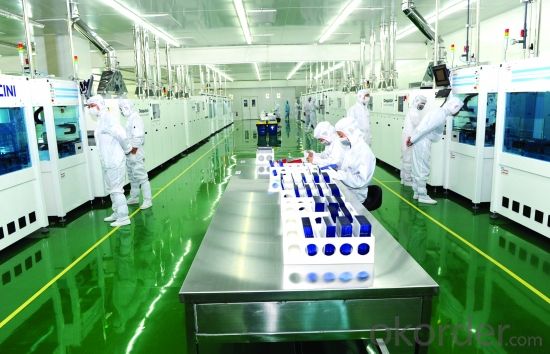
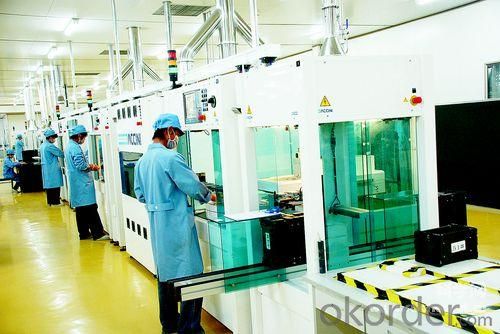
Package of Solar Cells
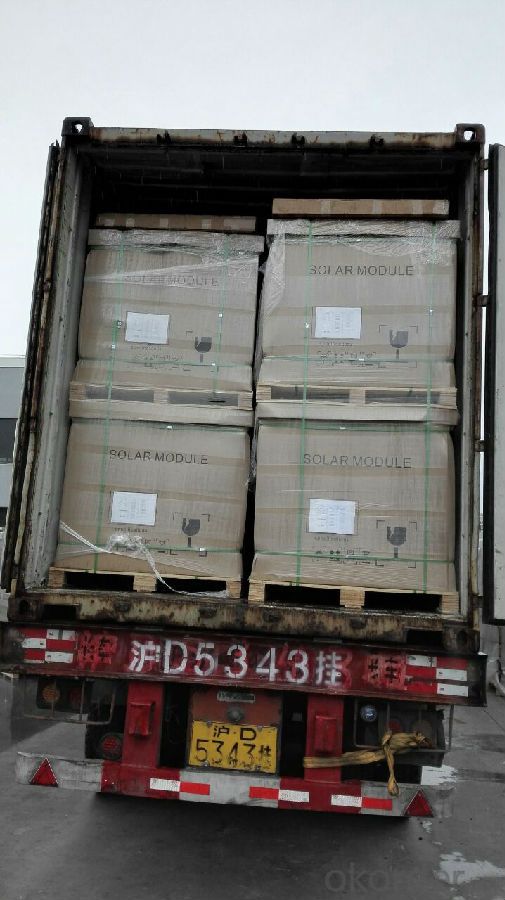
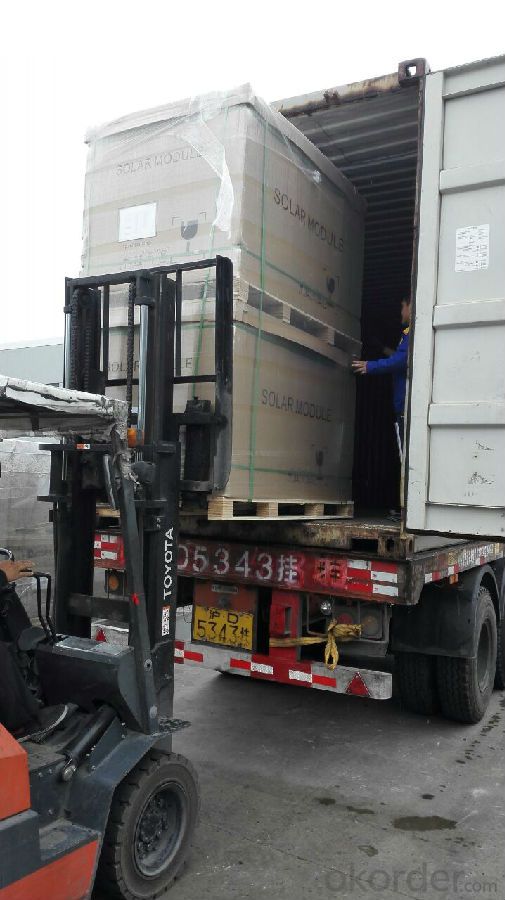
FAQ
We have organized several common questions for our clients,may help you sincerely:
1. What’s price per watt?
A: It’s depends on the quantity, delivery date and payment terms of the order. We can talk further about the detail price issue. Our products is high quality with lower price level.
2. Can you tell me the parameter of your solar cells?
We have different series of cells with different power output, both from c-si to a-si. Please take our specification sheet for your reference.
3. How do you pack your products?
We have rich experience on how to pack the panels to make sure the safety on shipment when it arrives at the destination.
4. Can you do OEM for us?
Yes, we can.
5. How long can we receive the product after purchase?
In the purchase of product within three working days, We will arrange the factory delivery as soon as possible. The perfect time of receiving is related to the state and position of customers. Commonly 7 to 10 working days can be served.
- Q:How do solar cells perform in cloudy or overcast conditions?
- Solar cells are less efficient in cloudy or overcast conditions compared to sunny days. The amount of sunlight reaching the cells is reduced, which reduces their ability to generate electricity. However, modern solar cell technology has improved to some extent, allowing them to still produce a certain amount of power even in cloudy conditions.
- Q:Can solar cells be used to power air conditioning systems?
- Yes, solar cells can be used to power air conditioning systems. Solar panels can generate electricity from sunlight, which can then be used to power various appliances including air conditioning units. This offers a sustainable and renewable energy solution, reducing reliance on traditional power sources and contributing to a greener environment. However, it is important to note that the efficiency and capacity of solar cells may limit their ability to fully power larger air conditioning systems.
- Q:Can solar cells be installed on sloped surfaces?
- Yes, solar cells can be installed on sloped surfaces. In fact, sloped surfaces can often be advantageous for solar panel installation as they allow for better sun exposure and increased energy generation.
- Q:Friends are fuel cells are chemical energy into electricity, solar cells are converted into electricity into electricity I would like to know in addition to the structure and the conversion of different ways there are no other differences hope that the specific power of everyone
- fuel for a wide range of: fuel cells can be applied to large urban power stations, but also as hospitals, shops, collective dormitories, remote mountainous areas of small power generation devices, as well as daily and national defense machinery used in walking power system. The development of fuel cells in the future new energy halo application of the major direction, its development has great social significance and economic significance.
- Q:How do solar cells handle power fluctuations in remote areas?
- Solar cells handle power fluctuations in remote areas through the use of energy storage systems, such as batteries. These batteries store excess solar energy generated during periods of high sunlight and release it during periods of low sunlight or high energy demand. This allows for a continuous and reliable power supply, mitigating the impact of power fluctuations in remote areas.
- Q:Can solar cells be used in military vehicles?
- Yes, solar cells can be used in military vehicles. They can help power various electronic systems and equipment, reducing reliance on traditional fuel sources and increasing energy efficiency. Additionally, solar cells can provide a sustainable and renewable energy solution for the military, especially in remote or off-grid operations.
- Q:Can solar cells be used in emergency lighting?
- Yes, solar cells can be used in emergency lighting. Solar-powered emergency lights are designed to provide illumination during power outages or emergencies by utilizing solar panels to convert sunlight into electricity, which is then stored in batteries for later use. This makes them a reliable and sustainable option for emergency lighting solutions.
- Q:What is a multi-junction solar cell?
- A multi-junction solar cell is a type of solar cell that consists of multiple layers of different semiconductor materials, each designed to efficiently capture a different portion of the solar spectrum. This allows the cell to convert a wider range of sunlight into electricity, resulting in higher energy conversion efficiency compared to traditional solar cells.
- Q:Can solar cells be used in indoor lighting applications?
- Yes, solar cells can be used in indoor lighting applications. However, their effectiveness may vary depending on the amount of sunlight available indoors.
- Q:How are solar cells made?
- Solar cells are typically made using a process called photovoltaic manufacturing, which involves several steps. First, silicon, which is the main material used in solar cells, is extracted from silica, a component of sand. The extracted silicon is then purified and transformed into a crystal structure suitable for solar cell production. These silicon wafers are then cut into thin slices. Next, various layers of conductive materials and anti-reflective coatings are applied to the wafer, creating the necessary electrical properties and enhancing light absorption. Finally, electrical contacts are added to the cell, allowing the generated electricity to be collected and used.
1. Manufacturer Overview |
|
|---|---|
| Location | |
| Year Established | |
| Annual Output Value | |
| Main Markets | |
| Company Certifications | |
2. Manufacturer Certificates |
|
|---|---|
| a) Certification Name | |
| Range | |
| Reference | |
| Validity Period | |
3. Manufacturer Capability |
|
|---|---|
| a)Trade Capacity | |
| Nearest Port | |
| Export Percentage | |
| No.of Employees in Trade Department | |
| Language Spoken: | |
| b)Factory Information | |
| Factory Size: | |
| No. of Production Lines | |
| Contract Manufacturing | |
| Product Price Range | |
Send your message to us
World-Beating Solar Cells-25 Years Life Time-17.4% Effiency
- Loading Port:
- Shanghai
- Payment Terms:
- TT OR LC
- Min Order Qty:
- 1000 pc
- Supply Capability:
- 5000000 pc/month
OKorder Service Pledge
OKorder Financial Service
Similar products
New products
Hot products
Hot Searches
Related keywords
